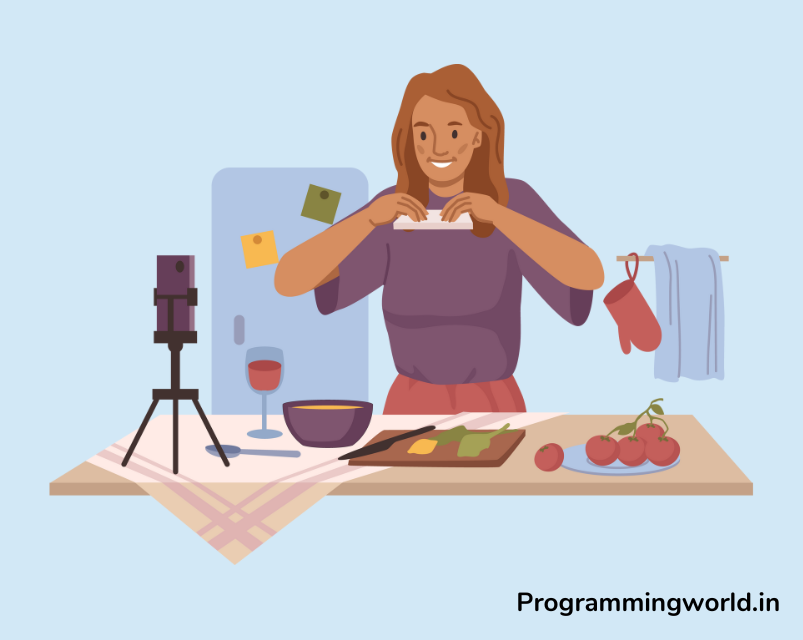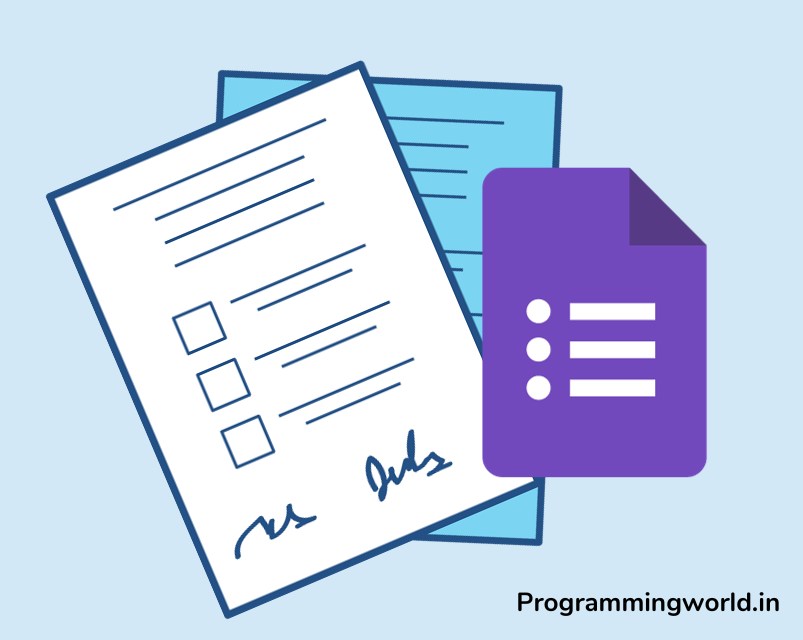Are you a foodie who loves cooking, baking, and experimenting with new recipes? Do you want to share your passion for food with others and potentially turn it into a profitable side hustle? If yes, starting a food blog might be the perfect opportunity for you.
A food blog is a website dedicated to everything food, from recipes to cooking tips, restaurant reviews, and more. Whether an amateur cook or a seasoned professional, a food blog gives you the platform to share your knowledge and expertise with a broader audience.
Starting a food blog has numerous potential benefits. Not only does it allow you to share your love for food with others, but it also provides a creative outlet for your passion. In addition, with the right approach, a food blog can also be a lucrative source of income through advertising, sponsored posts, and product reviews. Food blogs are also one of the most popular types of blogs.
So, let’s dive in and learn how to start a food blog! This guide is aimed at anyone interested in starting a food blog, from complete beginners to those with experience in the field. Whether you’re looking to turn your hobby into a full-time job or want to share your recipes with a few friends, this guide will provide the step-by-step instructions you need to get started.
Table of Contents
Step 1: Planning Your Food Blog
Starting a food blog can seem overwhelming, but with proper planning, it can be a fun and rewarding experience. The first step in starting a food blog is determining your niche and target audience.
A: Determine Your Niche:
- What type of food do you want to focus on? Your food blog should be centered around a particular type of food or cuisine you are passionate about. It could be anything from vegan cooking to baked goods or even a specific regional cuisine. Think about what type of food you love to cook and eat, and focus your blog around that.
- Who is your target audience? Once you have determined the type of food you want to focus on, consider who your target audience is. Are you targeting busy parents who want quick and easy meals? Foodies who are always on the lookout for new and exciting recipes? Or you may want to cater to specific dietary restrictions such as gluten-free or ketogenic diets. Understanding your target audience will help you create content that resonates with them.
B: Research Your Competition:
- Look at other food blogs in your niche. Take some time to research other food blogs in your niche. Look at the types of recipes they feature, the frequency of posts, and their overall style and tone. It will give you an idea of what’s already out there and help you differentiate yourself from the competition.
- Identify areas where you can differentiate yourself. As you research other food blogs, look for areas where you can stand out. You may have a unique perspective or cooking style, or you can offer a particular type of content that others in your niche don’t. Use these differentiators to your advantage, and highlight them in your blog.
C: Choose a Name and Platform:
- Come up with a catchy, memorable domain name. Your food blog’s name should be catchy, memorable, and easy to spell. It should also reflect the focus of your blog and be easy to search for online.
- You can start a food blog with various platforms, including WordPress, Squarespace, Wix, and more. Decide which blogging platform you want to use (e.g. WordPress, Squarespace). Research the different options and choose the one that best fits your needs. Consider factors such as ease of use, customization options, and cost when deciding.
- Set all important pages for blog; Like About Us, Contact Us, Privacy Policy, Write For Us, etc.
D: Set Your Goals:
- Determine what you want to achieve with your food blog. Are you looking to make money from advertising and sponsored posts? Or are you simply looking for a creative outlet to share your love of cooking? Think about why you want to start a food blog and what you hope to achieve. Understanding your goals will help you stay focused and motivated as you build your blog.
- Create a plan for how you will reach those goals. Once you have set your goals, create a plan for how you will reach them. It could include a schedule for publishing new content, a plan for growing your audience through social media, and a strategy for monetizing your blog. A plan will help you stay on track and reach your goals promptly.
In conclusion, proper planning is crucial in starting a successful food blog. By determining your niche, researching your competition, choosing a name and platform, and setting your goals, you can ensure that your blog is off to a strong start and set you on the path to success.
Step2: Creating Content for Your Food Blog
Creating content for your food blog is critical to building a successful blog. You can create an informative and engaging blog by developing your writing style, choosing the right ingredients, writing high-quality recipe posts, and including images and videos.
A: Develop Your Writing Style:
- Write in a way that is both informative and engaging. When writing for your food blog, it’s crucial to balance providing informative, helpful content and making it engaging and fun to read. Use humour, personal anecdotes, and other storytelling techniques to make your blog more enjoyable for your readers.
- Consider using humour, personal anecdotes, etc. Your food blog allows you to share your personality and voice. Feel free to inject a little humour or share personal anecdotes in your writing. It will help you connect with your readers and make your blog more relatable and approachable.
B: Choose the Right Ingredients:
- Find high-quality recipes to feature on your blog. To create a successful food blog, you must have high-quality recipes to share with your readers. It could mean finding recipes online, developing your own, or combining both. Make sure your recipes are delicious, easy to follow, and well-written.
- Decide how you want to organize your recipes. Once you have a collection of recipes, think about how you want to organize them on your blog. Consider categorizing them by type of cuisine, difficulty level, ingredient, or any other method that makes sense for your blog. It will make it easier for your readers to find the recipes they’re looking for.
C: Write High-Quality Recipe Posts:
- Provide detailed instructions. When writing your recipe posts, provide detailed, step-by-step instructions that are easy to follow. Include ingredient measurements, cooking times, and helpful tips and suggestions.
- Include helpful tips and variations. In addition to the main recipe, consider offering variations or alternatives and any helpful tips you have learned while cooking the dish. It will make your blog more comprehensive and give your readers more information and inspiration.
- For better user experience you can design a custom signal post layout with elementor.
D: Include Images and Videos:
- Take quality photos of your food Images are a crucial part of any food blog. Make sure to take high-quality photos of the food you are cooking and feature them on your blog. It will make your blog more visually appealing and help readers understand what the finished dish should look like.
- Consider creating cooking videos. In addition to photos, consider creating cooking videos to accompany your recipes. It will allow your readers to see exactly how you make the dish and can make your blog more engaging and interactive. Cooking videos can also be a great way to showcase your personality and cooking style.
In conclusion, creating content for your food blog is essential to building a successful blog. You can create an informative and engaging blog by developing your writing style, choosing the right ingredients, writing high-quality recipe posts, and including images and videos. SEO and Website speed also matter for your blog, so try to learn and optimize each blog post for SEO.
Step 3: Building Your Brand and Promoting Your Food Blog
Starting a food blog is not just about creating delicious recipes and writing about them. It’s also about building your brand and promoting it effectively. This section will guide you through the essential steps to develop your brand identity, utilize social media, collaborate with other bloggers and brands, and engage with your audience.
A: Develop Your Brand Identity
The first step in promoting your food blog is to develop a strong brand identity. It will help you stand out in a crowded online space and establish your blog as a trusted source of information and inspiration. Here are two essential steps to help you get started:
- Choose colours, fonts, and other design elements that fit your brand. When choosing your brand elements, consider what represents you and your blog. For example, choose earthy colours and natural-looking fonts if you specialize in healthy recipes. Choose elements that you enjoy and will be easy to use consistently across all your platforms.
- Consistently use these elements across all your platforms. It will help build recognition and credibility with your audience. Once you have chosen your brand elements, use them consistently across all your platforms, including your blog, social media, and other online presence.
B: Utilize Social Media
Social media is an essential tool for promoting your food blog. You can reach a wider audience and connect with your followers by sharing your recipes, behind-the-scenes content, and other updates. You can use Instagram, Facebook, YouTube as well as Twitter to promote your blog.
Here are two key steps to help you get started:
- Create accounts on popular social media platforms (e.g. Instagram, Twitter). Choose the platforms that make sense for your blog and your audience. For example, Instagram is a popular choice for food bloggers because of its visual nature. Twitter is another option that can be used to share updates and engage with your followers.
- Share your recipes, behind-the-scenes content, etc. Use your social media accounts to share your recipes, behind-the-scenes content, and any other updates related to your blog. It will help build engagement with your followers and drive traffic to your blog.
C: Collaborate with Other Food Blogger and Brands
Collaborating with other bloggers and brands in your niche can help increase your exposure and build relationships within the industry. Here are two key steps to help you get started:
- Reach out to other food bloggers in your niche. Find other bloggers who write about similar topics and reach out to them. Offer to guest post on their blog or collaborate on a recipe. Building relationships with other bloggers can be a great way to cross-promote each other’s work and reach new audiences.
- Be open to new collaborations and opportunities. Look for opportunities to collaborate on projects or share each other’s content. For example, you can work with a brand to create sponsored content or collaborate on a recipe.
D: Engage with Your Audience
Finally, engaging with your audience is crucial for building a loyal following. Here are two key steps to help you get started:
- Respond to comments and messages. Take the time to respond to comments and messages from your followers. It will help build community and show that you care about your audience.
- Encourage readers to ask questions and provide feedback. Encourage your readers to ask questions and provide feedback by including a comments section on your blog and promoting it on social media. It will help you better understand your audience and create content that resonates with them.
In conclusion, building your brand and promoting your food blog requires effort and strategy.
Step 4: Monetizing Your Food Blog
This section of the blog is about monetizing a food blog. It provides several suggestions for generating revenue from the blog.
A: AdSense and Affiliate Marketing:
The first suggestion is to use AdSense, a program offered by Google that allows you to display advertisements on your blog. You will earn money every time someone clicks on one of the ads. Additionally, you can participate in affiliate marketing programs, where you promote products or services in exchange for a commission.
B: Sponsored Posts and Product Reviews:
Another suggestion is to offer to write sponsored posts for companies, where you will write a post about a product or service in exchange for payment. You can also review food-related products on your blog, which can help you earn money through affiliate marketing or direct compensation from the companies you are reviewing.
C: Cookbooks and E-Books:
Compiling your recipes into a cookbook or e-book and selling it on your blog or through online retailers can also be a source of revenue for your food blog.
D: Cooking Classes and Workshops:
Lastly, offering cooking classes in person or online or hosting workshops or demos at local events can be a way to monetize your food blog by turning your passion for cooking into a business opportunity.
Conclusion
Starting a food blog is a great way to share your passion for cooking and food with the world. From creating your blog to developing your brand, it’s essential to put in the effort and have patience, as building a successful blog takes time. Following the steps outlined in this guide, you can get your food blog up and running in no time.
However, the rewards of having a successful food blog can be immeasurable with persistence and dedication. So don’t wait any longer; start your food blog today! The world is waiting for your delicious recipes and unique perspective on food. Happy cooking and food blogging!




